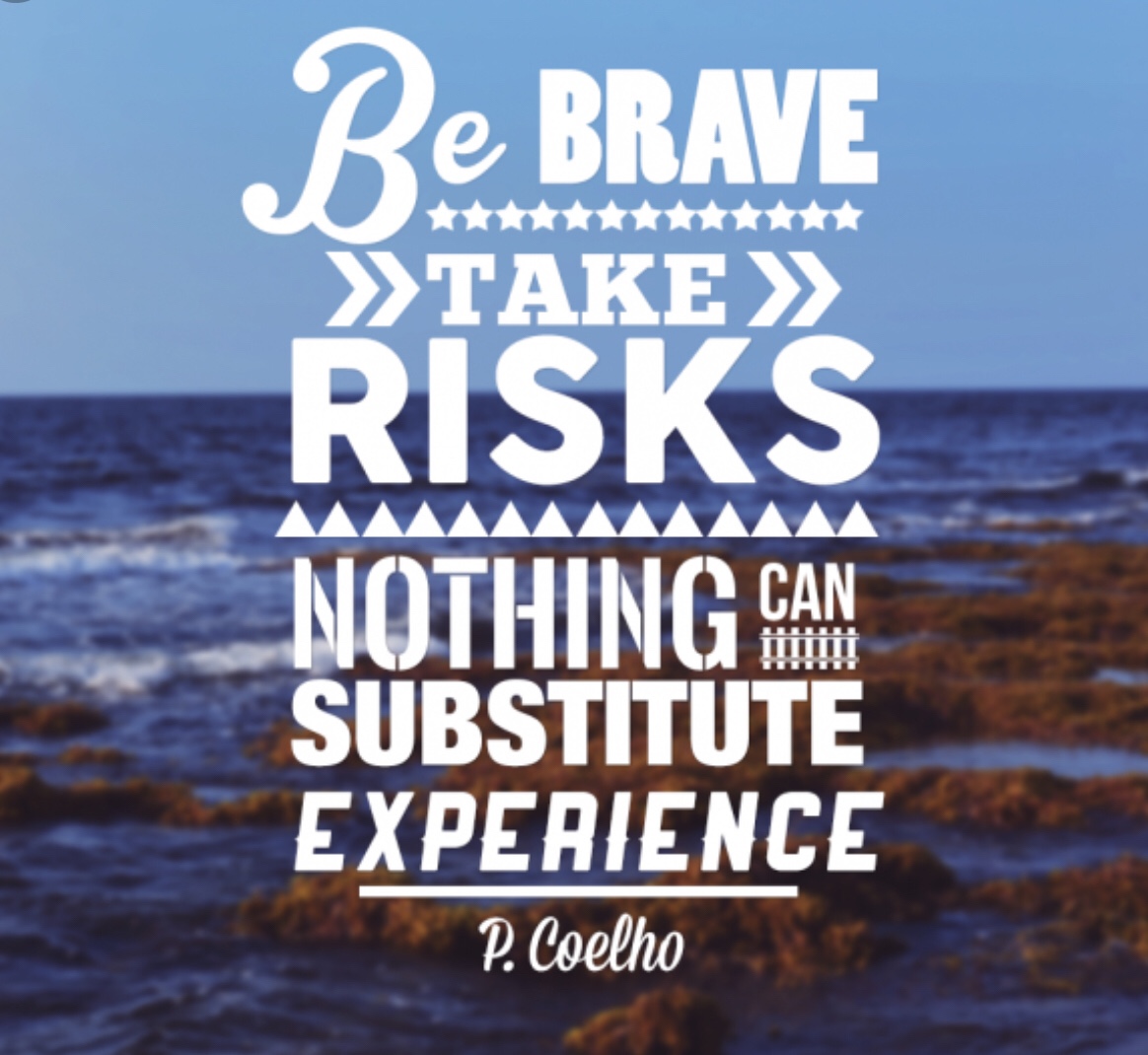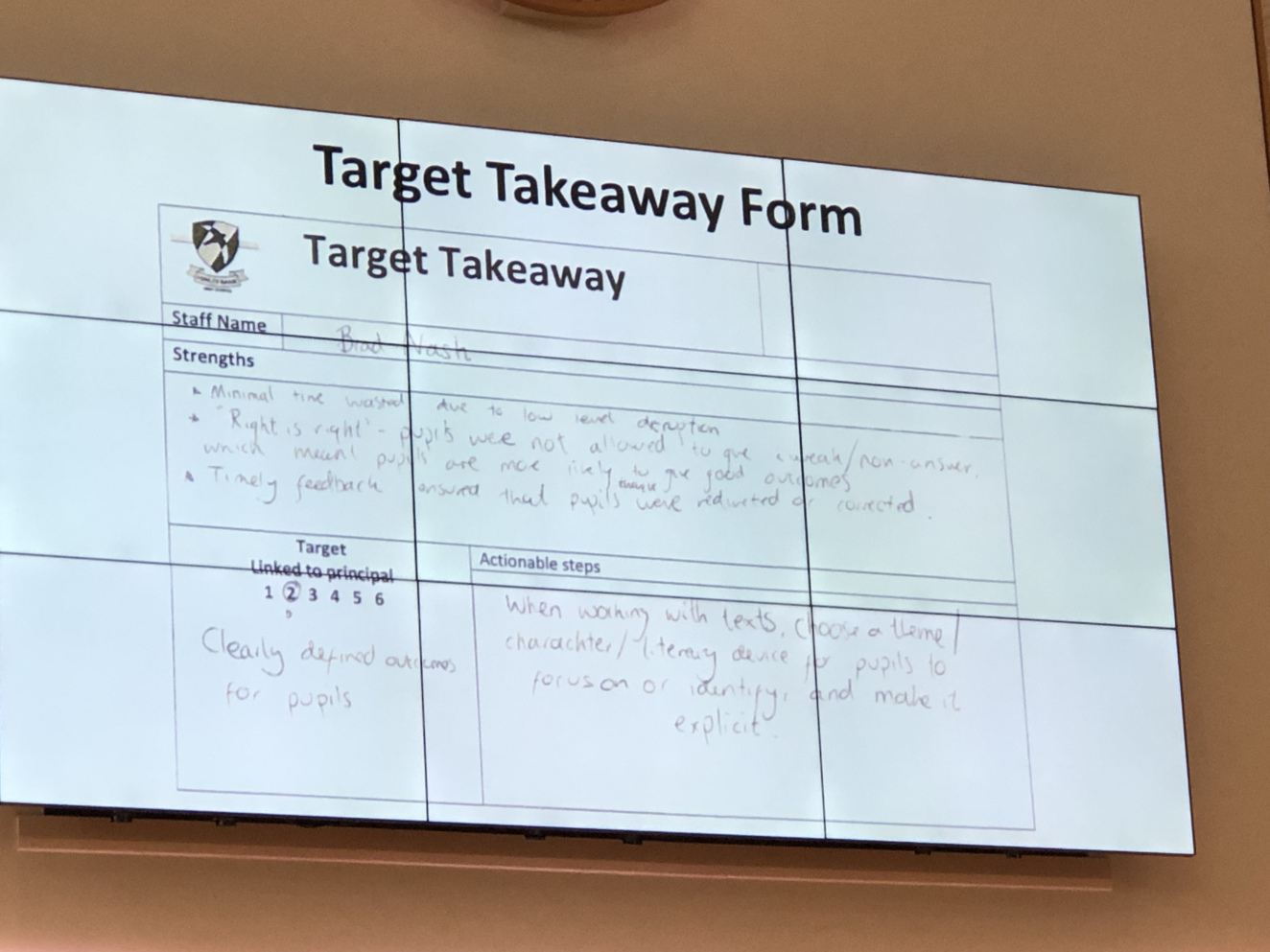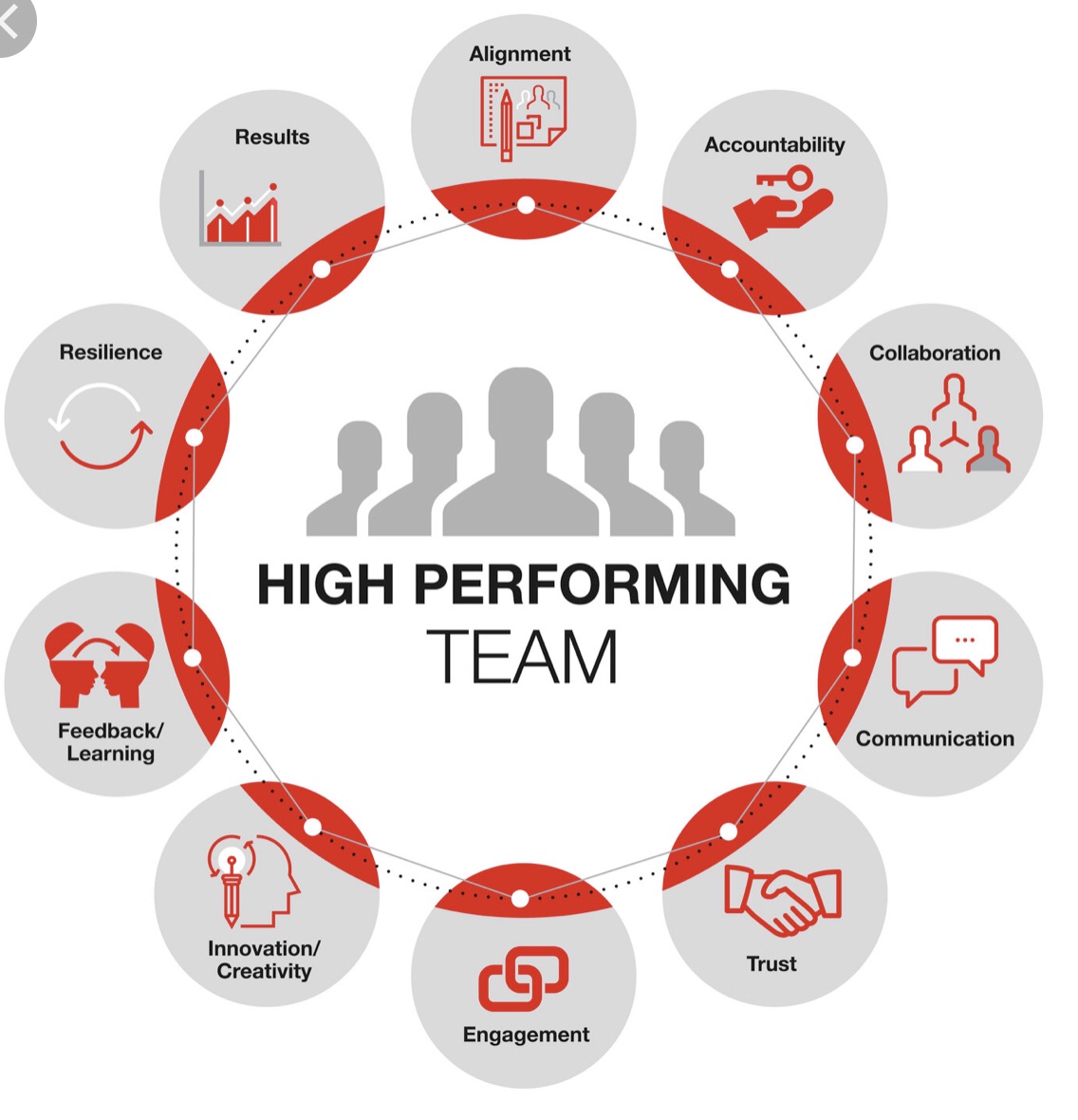Inspired by others...learning from experience of others is crucial to development

This comprehensive and useful review of the By Leaders, For Leaders May 1st conference was written brilliantly by Gemma Singleton (@mrssingleton) from The Beacon School.
On Wednesday 1st May I attended the By leaders, for leaders held in London and coordinated by Will Smith. To be honest I really didn’t know what to expect… and I was pleasantly surprised. The variety of leaders sharing strategies that they have implemented along with the successful impact they have had was a privilege to listen to, but what was more impressive was the golden thread running through every presentation which linked to introducing change, simplicity, clarity and communication are crucial to its success but more importantly it must be underpinned by your core values and ethos which must be embodied throughout the school and in everything you do.

The variety of speakers really enables me to gain ideas from every single person and so I have decided to include my notes from the day:
David Weston- CEO teacher development trust
-Developing professionals: one of the major challenges is collaboration between staff because of 3 main things
1. The Ikea effect- but we worked hard on that…pride is out of proportion/ sunk cost bias- if you work hard on an idea you really value it. If you constantly change this can disrupt staff feeling when introducing new initiatives. This is why getting people to change is difficult as people get attached.
2. Halo effect/ tribal bias- more likely to believe things from your context and peers, less likely otherwise. This can cause judgement or challenge. This is based on how connected we are to the person delivering the change.
3. Fundamental attribution error- it is not my mental failing, it’s your character defect. The challenge is if you don’t agree, you cause conflict which means you distrust them- this then reinforces the halo effect and the two concepts become cyclical.
The only way to overcome these biases is to create a culture where people are really connected and trust each other.
Kraft and Papay 2014- looked at the quality of professional development. They found that schools can plateau and this was linked to the quality of teacher environment. Schools that were higher performing noticeably had an “improvement” culture and continually improved rather than lower performing schools by about 40%. This idea of teacher improving year on year were down to big 6 factors;
1. Peer collaboration- to refine practice and solve problems in the school (coaching, collaborative enquiry, middle leaders), this can also be driven by research!! Solution based focus.
2. Principal leadership- school leaders support teachers, listen more and address concerns. Responsive to concerns (coaching, change management and staff surveys)
3. Behaviour for learning- a safe environment and rules are consistently enforced and school leader assist teachers (behaviour routines, pedagogical coaching and CPD). Student behaviour and teacher behaviour are both important. Collaborative approach the “we”.
4. Professional development- sufficient time, resources for relevant CPD and INSET. (CPD leadership, collaborative enquiry). Ensure that staff see the relevance and get buy in to their own practice. We don’t want superficial learning… we want ideas based on relevant impact to their students. We need to consider how we are leading CPD. Encourage teachers to revisit, reflect and measure their own impact in their own lessons. Strip it back and build in time. Don’t do too much- focus on embedding.
5. School culture- mutual trust, respect, openness, commitment to student achievement. (Coaching culture, effective conversation, CPD leadership) sense of team and collegiality. Effective team work conversation. Spaces and time for staff to work.
6. Teacher appraisal- meaningful, consistent feedback that helps staff improve their teaching (change monitoring and appraisal to coaching).
If you want staff to improve we need to consider culture and not just CPD. Unleash great teaching- great read.
Take the learning of your colleagues as seriously as the learning of your students.
Leann Swain- Disruption free classroom (easy Barnett school)
Be courages and deliberate when leading whole school change. Strategies that help:
1. Absolute clarity (keep it simple)
2. Over-communicate to all stakeholders- you are on board, others may not. Sell, sell, sell.
3. Remind, support, challenge
4. Evaluate
5. Repeat
Building up a culture of trust. Ensure that all stakeholders are on board with a change. Model the behaviour and develop confidence in staff to see through what you want to happen.
Switch model (Heath and Heath)- you are the rider but you are not going anywhere unless you take the staff and students with you. Know your destination and script the critical. Outline the rules and find the feeling- discuss and share concerns. Shrink the change by sharing the expectation with the staff and students and absolute clarity is key. Grown your people through role modelling and development of staff confidence not only in you- but in the strategy. Motivate the herd. Use common language.
Shaping the path is important by tweaking the environment by reminders or expectations. Encourage good habits and enable formation of habits so it becomes responsive and automatic. Rally the herd to support this. Show how it works in other schools- enable staff to see this in other schools and how it works. Common language for staff is important and can be confusing for students- level of scripting is key (behind the scenes). Make it easy for the staff and encourage staff to follow the simple systems- SLT need to work hard to embed a system and not falter.
Communicate this to parents and students and ensure the environment is ready for the change so it can become habitual. Create a canvas by which teachers can teach- next step is to develop teachers.
“Be courageous and deliberate”
Joe Ambrose- More development, less monitoring of teaching and learning. (Henbury School)
First principles:
1. Practice informed by what works.
2. Improving the quality of teaching and learning is the core business.
3. Teachers improve most quickly when they receive frequent feedback and opportunities to practice.
Policy:
All teachers will receive drop ins every two weeks by 2 professionals.
1. DDI are developmental
2. Last no longer than 15 minutes and scheduled
3. Lessons are visited in pairs
4. Teachers are set one achievable actionable target
5. Teachers ensure that feedback translates into practice.
Principles of better practice: feedback around the L&T principles, then a target takeaway form, this is then fed into a target sheet and links to what L&T principle it links to. This allows you to look at trends, patterns and can look at support. This enables triangulation of teaching need. You can then give an appraisal target to engage with this process- this then sets up accountability.
Books- leverage leadership (Bambrick Santoyo) and practice perfect (Doug Lemov)

Jill Rowe- Directing the ethos (Oasis academy)
Ethos is so fundamentally important and it has to be absolutely intentional. Ethos is the way we do things around here- this can be both intended and unintended. Does the ethos match between staff and what actually happens. Ethos is your exoskeleton that provides the shape and structure by which everything happens and is built upon. Ethos is really easy to get stuck on one aspect. Ethos is an indicator of what you are rooted in- it’s your distinctive. Values should be specific to you and your context. Your ethos needs to be your guiding principle for absolutely everything that needs and will happen. This enables you to identify the Golden Thread and the narrative that it is rooted in. This enables you to explore the origins of the values- if you don’t they will get discarded and lost. Ethos needs to be specific, clear and defined- they need to be seen, heard, discussed, embedded, they should be explored, explained and explicit. Your ethos is a declaration of intent and a description of the way you think the world should be.
Ethos needs to be embodied, lives, exemplified and led. It always begins with the leaders. What are you passing and and how do you know? Are you modelling your communicable acts and everyday interactions. When we are not in tune with our ethos there is dissonance- this can be crippling and damaging. Leaders need to be vulnerable, visionary and courageous but also intentional.
Introduce, embed and sustain! Enable your ethos to invite people to see the world differently.
Ben Parnell- Creating and sustaining brilliant teams (Greenshaw)
Dixon’s Academy in Bradford (email Oli to book in)
SLT need to know their school in and out. Do they know the children, their classes, the subject, the type of work and subject matter.
Relentless focus on teaching and learning that is evident in the structures and systems in what they do. Does it enable a genuine development of teachers. Purposeful drive to improve teaching and learning throughout.
High quality line management- this can really drive improvement. Eye to detail where nothing slips.
How can you address these?
1. Snags board- micro is not missed within the school. Nothing gets away from staff, anything that you notice then gets challenged and is addressed. The eye to detail is key. Everyone in the team being accountable. SLT have to be out and about- visibility is imperative to ensure high success and higher performing teams. This enables you to moderate and standardise the judgement between leadership members. This should then be linked to middle leaders and then into classroom teachers.
2. SLT Meeting every morning at 7:45. Check snag board and address, the. DDI structure then is the main bulk to try and spot strong teaching or possible concerns that need addressing. It is key that the SLT need to understand how to improve teaching and learning.
3. Experts in the exam specifications and examiners reports. If you don’t understand the subject how can you interrogate, coach and support if you don’t know. Become the expert in the subjects you manage. This should improve the quality of the line management meeting.
John Rudd- Positivity and marginal gains (Swimming and diving Ireland Head Coach)
Marginal gains is what we are about. It’s the small changes that can lead to total transformation. The aggregation of the small changes lead to a lever change that is more
likely to be adopted and embedded.
1. The window of opportunity is small
2. The chance of finding your full potential is challenging
3. Maximise everything that is positive
4. Eradicate everything that isn’t
5. Clear focus and direction
6. Process driven- control the controllable (you can not control the outcomes, but you can prepare the students or staff the best way you can)
7. Be patient
8. Reach the individual within the group- that is key
9. Common core delivery principles- beat the same drum
10. Quality of rest is as important as the quality of performance (students and staff)
11. Educate holistically, the lifestyle and the support network- person first, staff/student second
12. Develop self reliance, self management within individuals- put speed bumps in place to prepare them for challenges
13. High performance delivery is a step across not a step up. The expectations and standards are the same everyday so that the exams or the teaching aspects in department become consistent and embedded.
Don’t leave any stone unturned. Pay massive attention to the micro detail. Use the expertise of the people surrounding you, but you ultimately are accountable. Put the snags right!
Differentiation of approach directly correlates to the quality of delivery
Value added is the only factor that truly determines a professionals ability and their impact of those in their care.
We must consider:
-Deliver a performance in a moment that matters.
-Establish strategies to establish this as well as the direction.
-Culturally buy into this
-Forget the past- it’s gone
-Our behaviour has to be consistent
-Be resilient and ready for the challenge
-The path will never be as you thought, predicted or planned.
Know that every person you interact with is an individual and do have difference whether slight or massive. No one is bigger than the team.
High performing teams:
1. No one is bigger than the team
2. No one is more entitled
3. Earn it
4. No different rules, standards or conditions
5. You get what you put in
6. The right people make ordinary things extraordinary
7. Evolve as gains can be temporary
8. Enjoy the experience and not endure them
9. Deal with difficulties
10. Keep it simple
11. Leave egos at the door
12. Enjoy each other’s success and support each other
Building resilience:
1. The capacity to survive
2. Progress through difficulty
3. Bounce back
4. Move on positively
5. Nurturing realistic hope along controlled optimism
6. Firm elbows- be prepared
7. Foot up first- are you there first!
Resilience helps with mental health, flexibility, problem solving, show commitment, show control and can take on challenge. This leads to an enduring form of resilience which is hardiness.
@coachjonrudd (Twitter)

Jeremy Turner- Inspiration to impact (Bushy Meads)
Inspire, trust, collaborate and improve.
The power of seeing things in action are very important. Cross school collaboration would be a great way for staff to see specific things. These can then be used and adapted to work in the context of your own school (target takeaway/hidden gems). Sharing best practice across staff.
Dive in deeper day… a day that enables cross collaboration. Use ideas of different school- seeing it in action- adapting to your own context. The idea of sharing solutions to develop a culture of excellence!
(Staff thank you- email from the head teacher to year 11 students, this was celebrated)
The Black book idea- each dept add a teaching and learning strategy and have the number of days as people I. Their teams, no repetition of strategies, extra feedback in weekly briefing and this provides a training booklet for new/ existing staff.
Will Smith- Leadership of outcomes (Greenshaw)
Curriculum- intent, implementation and impact . A broad and balanced, well manned curriculum. Delivery is crucial but if you take your eye off outcomes it can be detrimental.
Outcomes are life changing and transforming for the students. The curriculum underpins this and allows this to be successful. We need to make things less complex with clarity (not easy). Progress 8 is one part of a measure we aim to achieve…we need to develop a narrative surrounding how we are intending in raising standards in our context.
1. Set very high expectations in departments
2. No need to share target grades
3. Identify a raising standard leaders with the RSL chip fully inserted.
4. Reduce the amount of data collected
5. Create space or the subject leaders to lead
6. Focus on development on subject leadership- not constant monitoring.
RSL qualities
⁃ Clear in thought
⁃ Clear communicator
⁃ Disciplined
⁃ Relentless (energy creator)
⁃ Believer (have and generate)
⁃ Authentic
⁃ Wise
Authentic leadership- we are all on a learning journey and it stems from individuality. Sometimes it can be imperfect and that’s ok.
Manny Botwe- Keeping the main thing in focus (Tytherington School)
An ambitious school is at the heart of the community. Create spectacle and theatre. Values and correct culture really enables you to have difficult conversations as it enables you to deal with people effectively.
Raise the profile of the school- get in the local newspaper each week for something.
Ideas:
1. Focus on culture and values of the school- relentless focus!
2. Establishing the collective moral purpose.
3. Ambitious- always striving to improve, but considering the heart and community do schools.
4. High quality experiences for every youngster.
5. Relationships between staff are key and can make or break the school.
6. Obsess about building discretionary effort (Andy Buck- Leadership matters) – right bus wrong seat?
7. As leaders we have a responsibility to be inspirational every day- walking the talk, knowing and understanding your team. Have conversations with your team. Disciplining yourself so you don’t erode the culture.
8. Consider what you say/email- people interpret your words in different ways/ hidden meanings. Face to face works.
9. Model the behaviours you expect (this will drive the cultures that you expect in your staff). Overtly intellectual SLT culture will spread.
10. Invent tradition
11. Attack the great ideas for September attitude- do it now!
12. Look after your staff- talk to them, get to now them, crawl all over the school. How many students and teachers are you conversing with? This shows that you are valued and that people care for both staff and students.
My notes really don’t do any of the speakers justice- but their messages are important! Look after your staff, hold them to account, keep it simple and clear, don’t be afraid to over-communicate and drive the change in line in the image of your vision and ethos.
